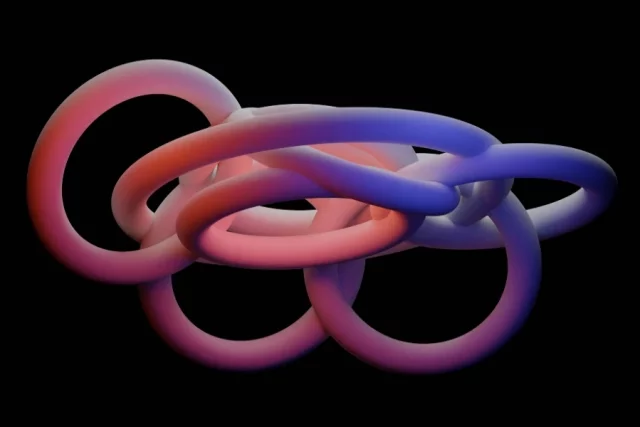So, you’ve decided to become a 3D artist. Good for you! You’re just taking your first small steps into the amazing world of a multi-billion-dollar industry! From video game development to movies and TV series, as well as engineering and architecture, 3D rendering is the primary tool for every conceivable digital project or creation nowadays. But where do you begin, and more importantly, how can you learn to become a skilled 3D artist?
This article will establish the tone and provide you with a roadmap to help you do just that. And who knows, perhaps you’ll be the next best 3D creator in the most competitive niche on the planet.
1. The Means
Naturally, the first step towards your goal should be deciding what tools to use. This involves the hardware and the software. Thanks to the huge technological progress made in the last twenty years, it is now quite affordable to buy a good computer that will offer the essential specifications: A powerful CPU and graphics card, a fast SSD hard drive with sufficient storage, and generally a system that incorporates the latest industry trends. Of course, such an “affordable” PC should be in the ballpark of at least 800 dollars.
The next, and possibly most crucial decision, is which program to utilize. There are currently so many different programs on the market, in terms of methods and price, that finding the correct one will take a long time. A good tip here is to determine what kind of 3D content you want to create, as every program is designed for a specific purpose. So, hopefully, this will help you narrow things down a little.
2. The Method
Once you’ve decided about the most suitable program, now is the time to start using it. This will in no way be an easy task though. Most professional 3D artists have a relevant degree from a college or university and several years on the job, working in major companies before they can produce industry-acceptable results. This isn’t to say you can’t learn on your own.
Obviously, you’ll have to be extremely talented in self-teaching methods, watch numerous relevant video tutorials on the internet and be analytical and persistent in applying what you learn to your work. It is a slow process, which will require your undivided attention, working for long hours daily in front of your computer. However, once you’ve mastered the basics, you will have made the first major step towards becoming a skilled 3D artist.
3. Planning Is Everything
Before you start creating your first texture or 3D model, it’s essential that you prioritize the different stages of your work. As with building a house, where we have to lay the foundation first and add the roof at the end, this requires strategic thinking and proper planning, so that you won’t find out at the latest stages that you had to make things differently, realizing that you have to start all over. For that reason, you should learn about the project’s structure beforehand so that you don’t have to cope with a jumble of various files, folders, and items that will require a large amount of time to find later. If everything is well-organized, named, and cataloged in a logical order, it will make it much easier to focus on the creative part, which is the most important one.
4. Making 3D Models
Once you have the right software, it’s time to focus on the creation itself. If you’ve done your thorough research, you probably know by now that the two main objects of concern for both Cinema 3D visuals experts and video game developers are the models and the environments. In order to create 3D simulations of real-life objects or people by manipulating polygons and texture, you need to have the equivalent object in mind. You might have a photograph or the object itself in front of you.
Movie 3D visual artists, on the other hand, use a precise scan of a person to generate an almost lifelike duplicate. The next step is to utilize your software to build the wireframe, the skeleton so to speak, which is essentially the basis of the outcome.
Then it’s time for the details, the texturing, which lets the artist apply colors, designs, and textures to the model to make it look more lifelike. According to the developers at https://www.atomontage.com, this procedure can easily be accomplished by using modern 3D simulation and rendering techniques. In other words, rather than employing two or more tools to accomplish amazing outcomes, you may now do so with only one program or online platform that does everything.
5. Creating the Environments
Your second challenge is to create lifelike environments, whether for the cinema, a 3D presentation, or video game levels. These again could be simulations of places that exist in real life or totally imaginary landscapes or inside surfaces that you have simply made up. To make them as realistic as possible, you might want to take some ideas from the wide variety of movies, video games, or artwork that can be found on the web for free.
Don’t worry about authenticity because remember that everyone is ultimately influenced by someone else. Besides, it’s totally different to be positively influenced by something that will give you fresh ideas to create something new from simply copying the work of another creator. As with model creation, the same methods can be applied here, either by using various programs or one, all-inclusive solution.
These are the most essential tips that will help you create exceptional 3D content. The world of 3D creation is vast and so intricate that you must wholeheartedly devote yourself to the task and probably make some sacrifices along the way, concerning your free time or even your relationships to produce the desired outcome. You should keep in mind that no one has ever succeeded without hard work and commitment. If you have the vision and the will to follow it to the end and make your dreams come true, then eventually, with a little luck, you are bound to get there.














